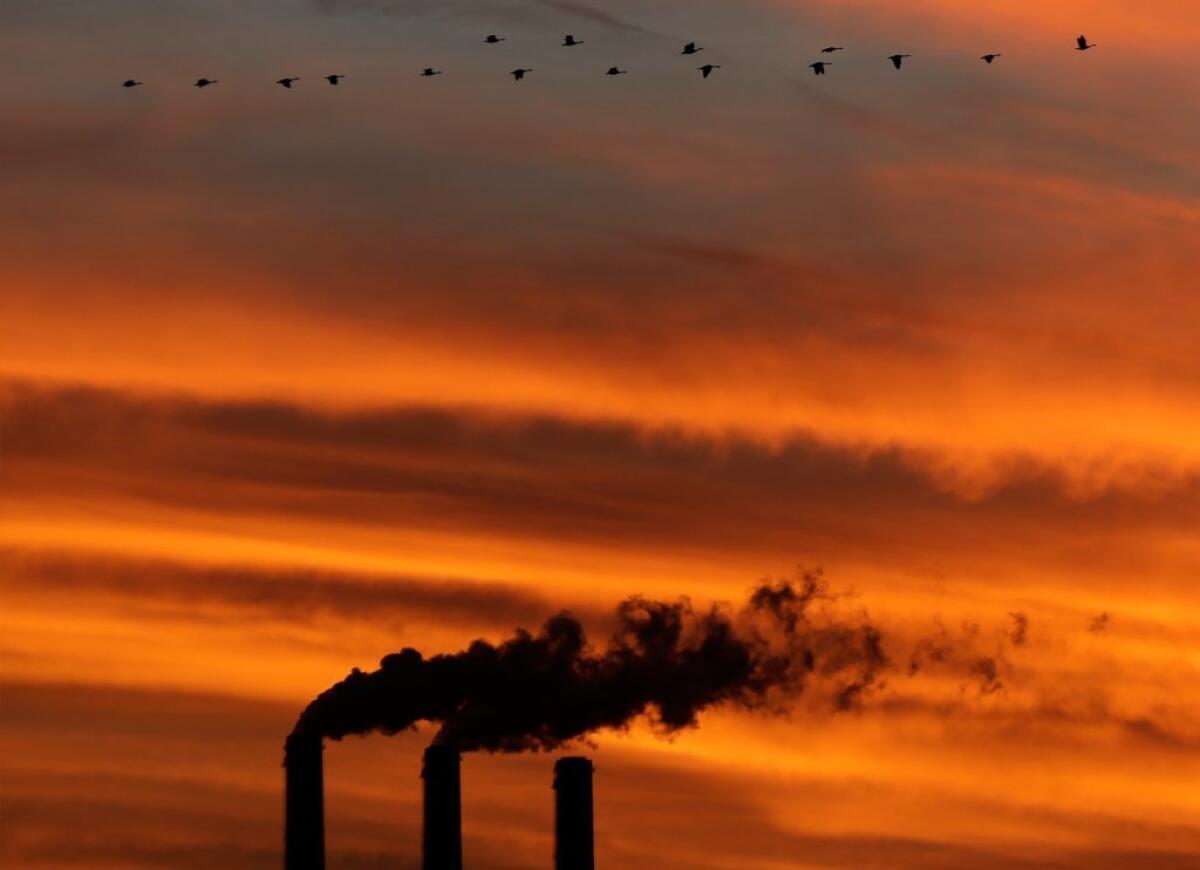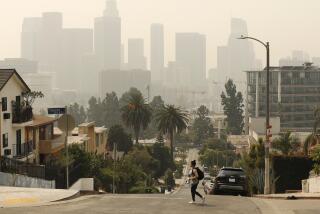Carbon dioxide in the atmosphere crosses historic threshold

WASHINGTON -- The ratio of carbon dioxide in the Earth’s atmosphere has surpassed 400 parts per million in an average daily reading at Hawaii’s Mauna Loa Observatory, the highest concentration of the heat-trapping greenhouse gas in millions of years.
While several atmospheric readings in the Arctic have recently exceeded 400 ppm of carbon dioxide, the Mauna Loa daily average readings are considered the benchmark indicators of the Earth’s atmospheric makeup.
Climate scientists have calculated that the world needs to keep carbon dioxide emissions from crossing the 400-ppm threshold in order to avoid a rise of 2 degrees Celsius (3.6 degrees Fahrenheit) above the average global temperature of pre-industrial times and profound changes to nearly every aspect of life.
The 400-ppm readings were compiled by the National Oceanic and Atmospheric Administration for May 9.
Another series of readings on Mauna Loa, called the Keeling curve and run by the Scripps Institution of Oceanography at UC San Diego, showed that carbon dioxide readings were at 318 parts per million in 1958, when recordings first began on the Hawaiian volcano. The Scripps daily readings, which are the longest continuous record of carbon dioxide, were just shy of 400 ppm on May 9.
Earth’s greenhouse gas levels approach 400-ppm milestone
The ratio of carbon dioxide was about 280 ppm in pre-industrial times. But the consumption of carbon-based fuels such as coal and oil as part of widespread industrialization has increased carbon dioxide in the atmosphere and pushed global average temperatures rapidly higher. In the last 150 years or so, the Earth has warmed by about 1 degree Celsius, or 1.8 degrees Fahrenheit.
The 400-ppm reading is a sign of a process that will play out over the next few years, said Ralph Keeling, professor of geochemistry at Scripps. Over the summer, readings will probably follow a seasonal course and fall by about 6 ppm. But next year, the late spring readings will be even higher, and in a few more years, he said, there will no longer be readings under 400 ppm.
“This needs to be a wake-up call,” said Melanie Fitzpatrick, climate scientist at the Union of Concerned Scientists, a research and advocacy group based in Washington. “If we don’t reduce carbon soon, we may no longer talk about searing summer temperatures, 100-year storms and intense droughts as something unusual because they may be the norm. When I started giving talks on climate change in the early 1990s, I was bemoaning the fact that carbon dioxide levels had reached just over 350 parts per million. Now I only wish for that level.”
Chances appear remote that the United States, or any other major emitter of carbon dioxide, such as China or Europe, will take aggressive steps to reduce carbon dioxide emissions.
Rules to cut emissions from power plants, the biggest emitters of carbon dioxide in the U.S., have stalled so far in the Obama administration. Senate Republicans have blocked voting on the the president’s nominee to run the Environmental Protection Agency, in part because of her earlier work to cut greenhouse gas emissions and to signal their resistance to future efforts. Consumption of coal in the U.S. has fallen, but exports to power plants in China and India have risen.
The Keeling curve is named after Scripps climate scientist Charles D. Keeling, who established the site atop Mauna Kea on the big island of Hawaii to gauge carbon dioxide.
According to the Keeling curve website at Scripps, “the continued rapid rise in CO2 ensures that levels will rise far beyond 400 ppm before they stabilize. If the pace of the last decade continues, carbon dioxide will reach 450 ppm by the year 2040.”
The 400-ppm reading comes on the heels of the vast Ventura County wildfire. A growing body of research has said that climate change may increase the risk of extreme rainfall in the tropics and drought in the world’s temperate zones, increasing the likelihood of natural disasters like wildfires.
Said Ralph Keeling, who is Charles Keeling’s son: “In my view, we’re already in dangerous territory as far as consequences. It’s a concern that we keep marching forward and burning fossil fuels as though it had no effect.”
Return to Science Now.







